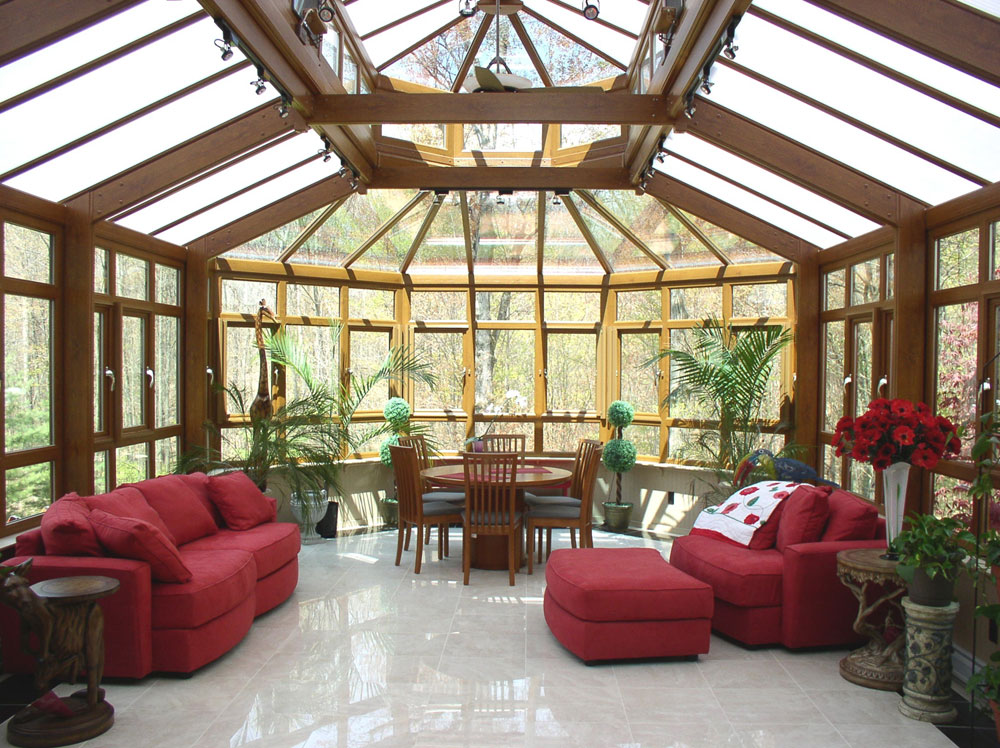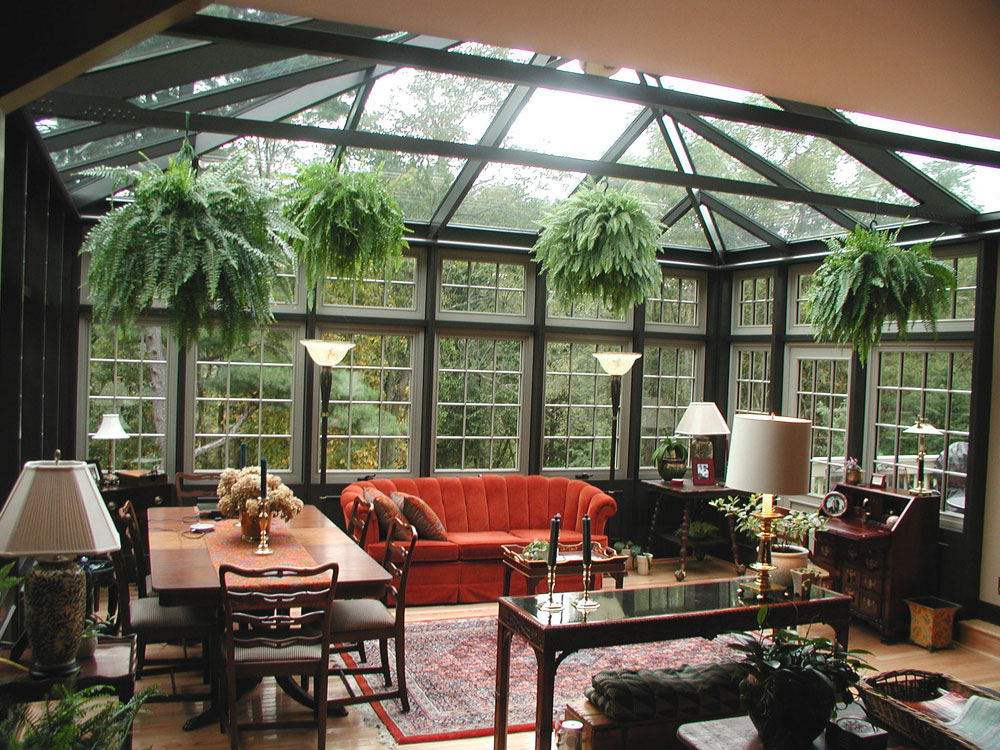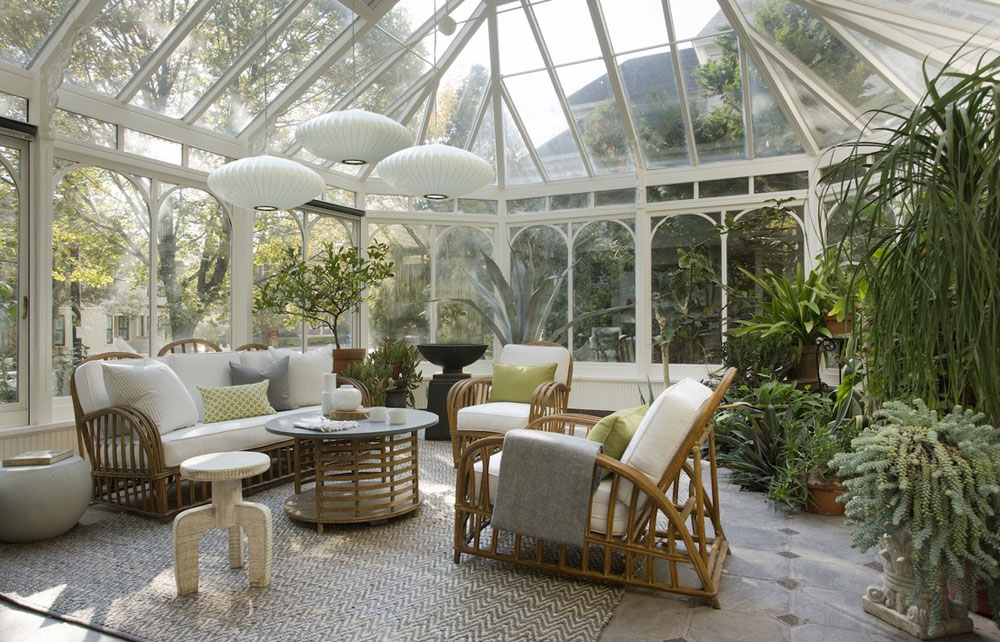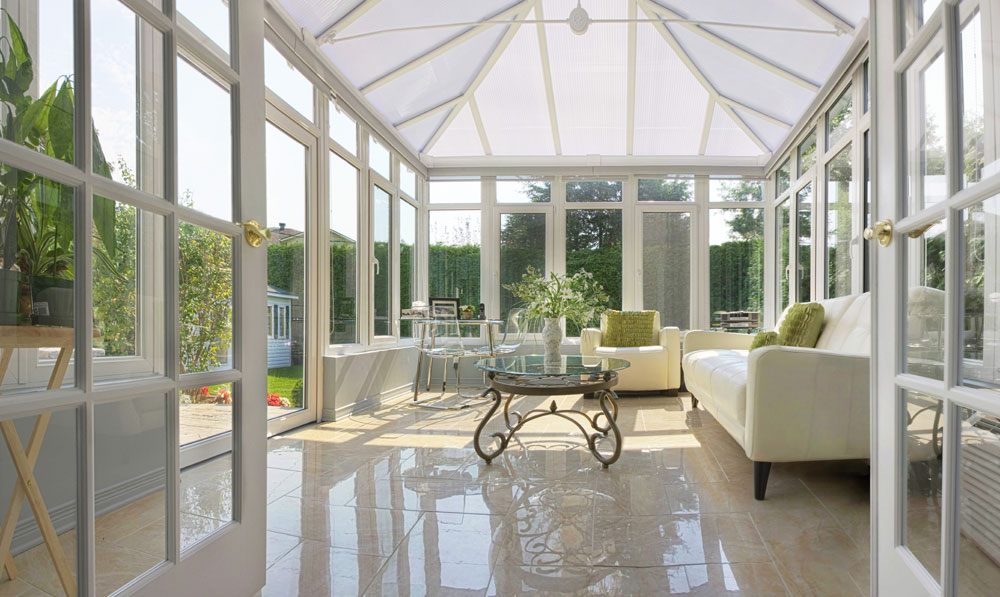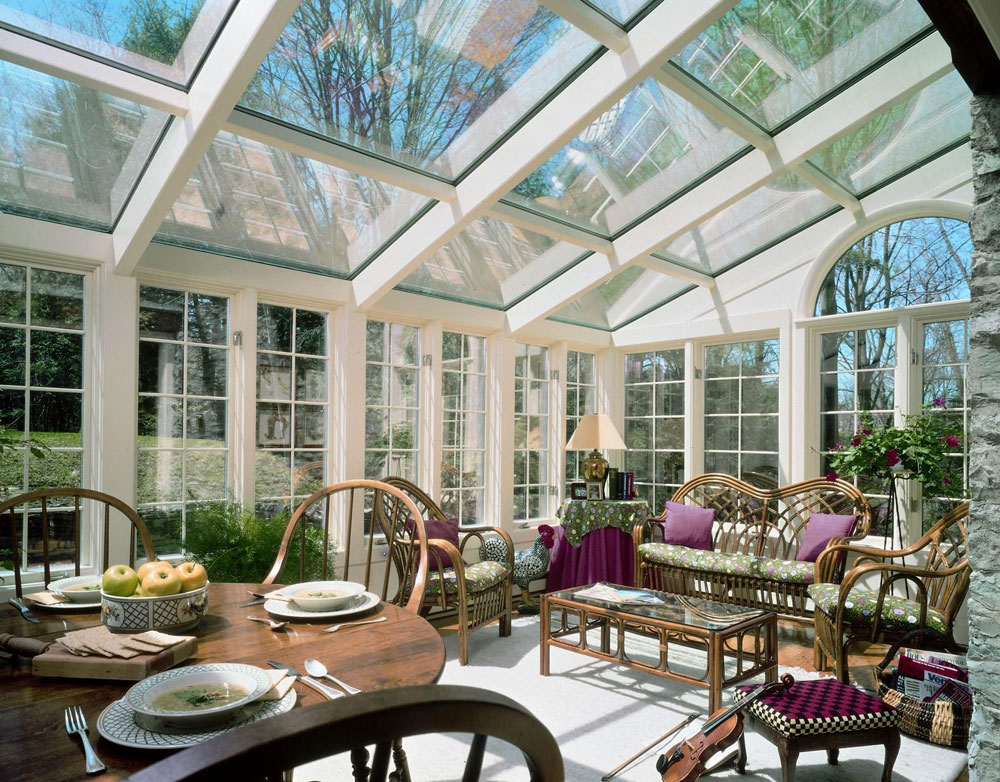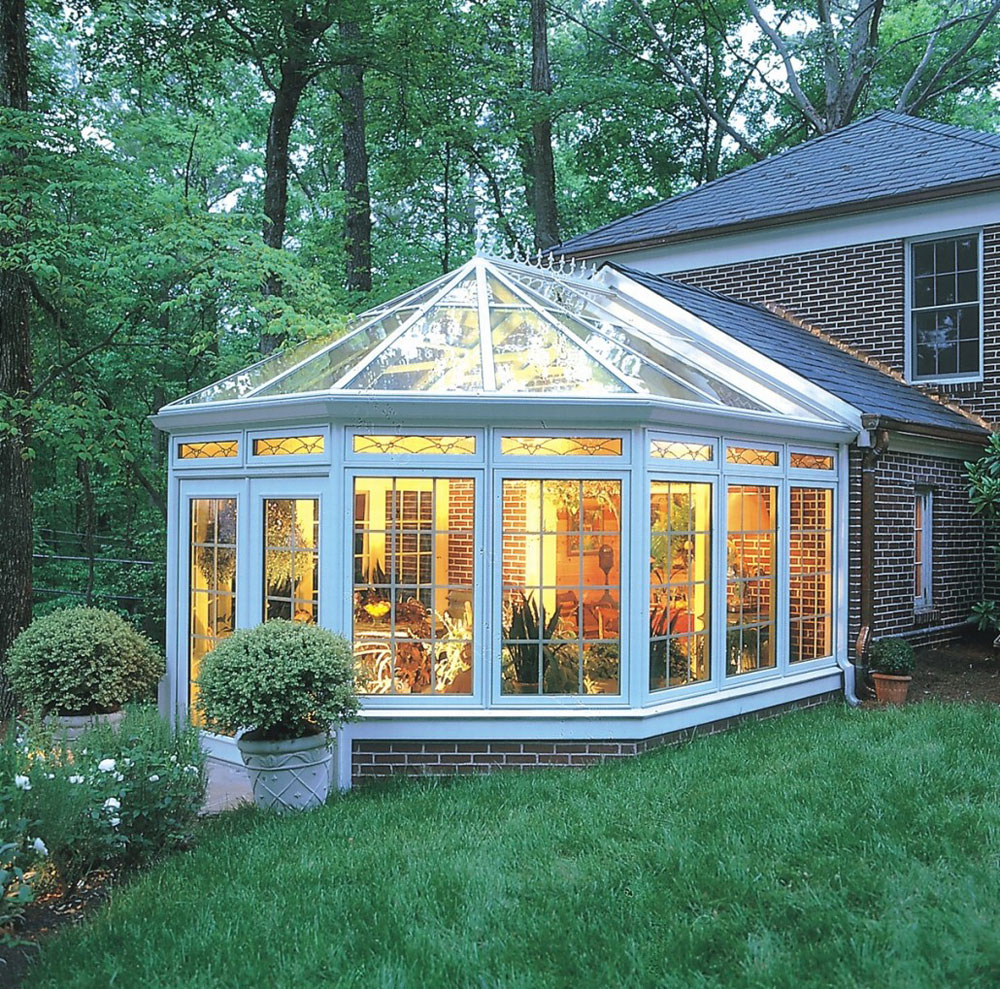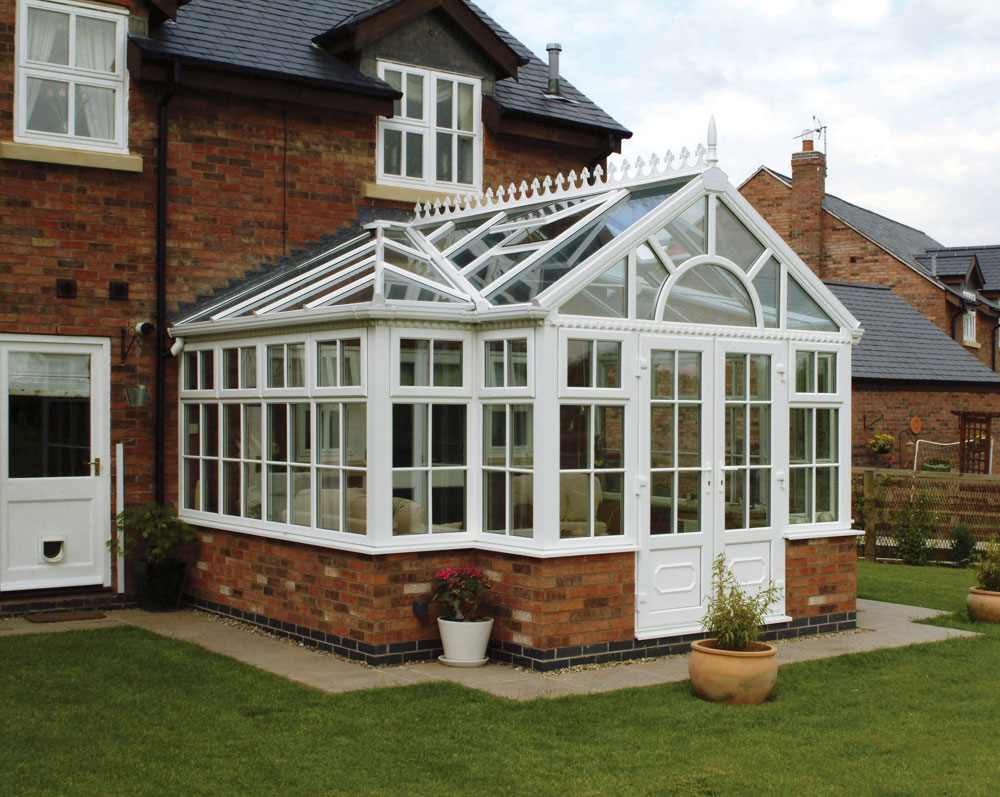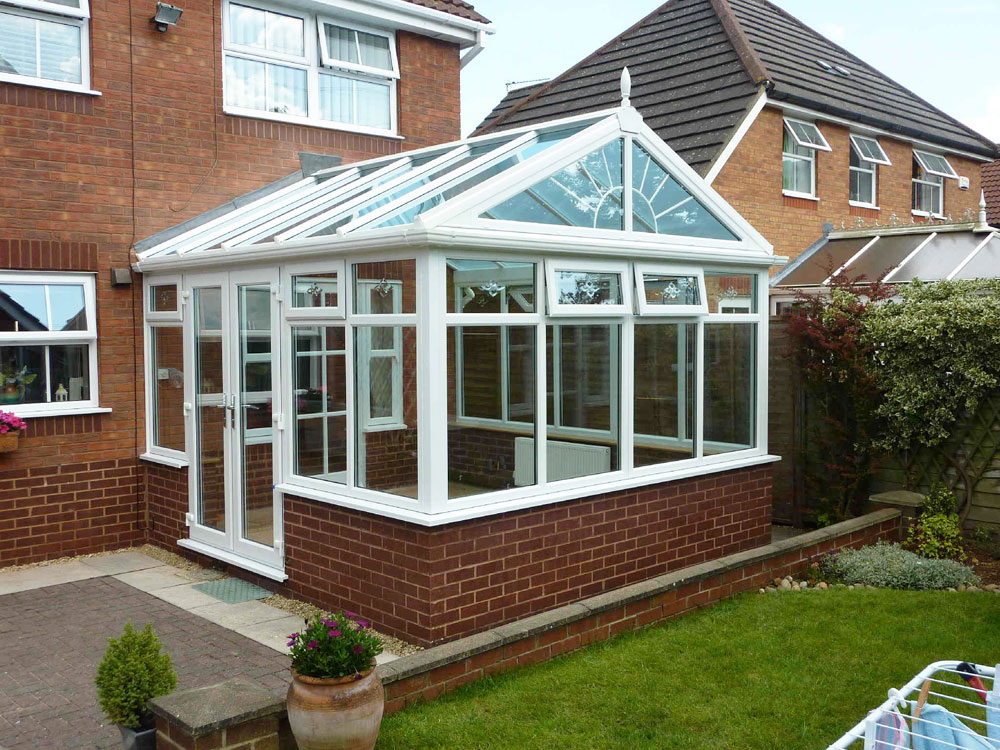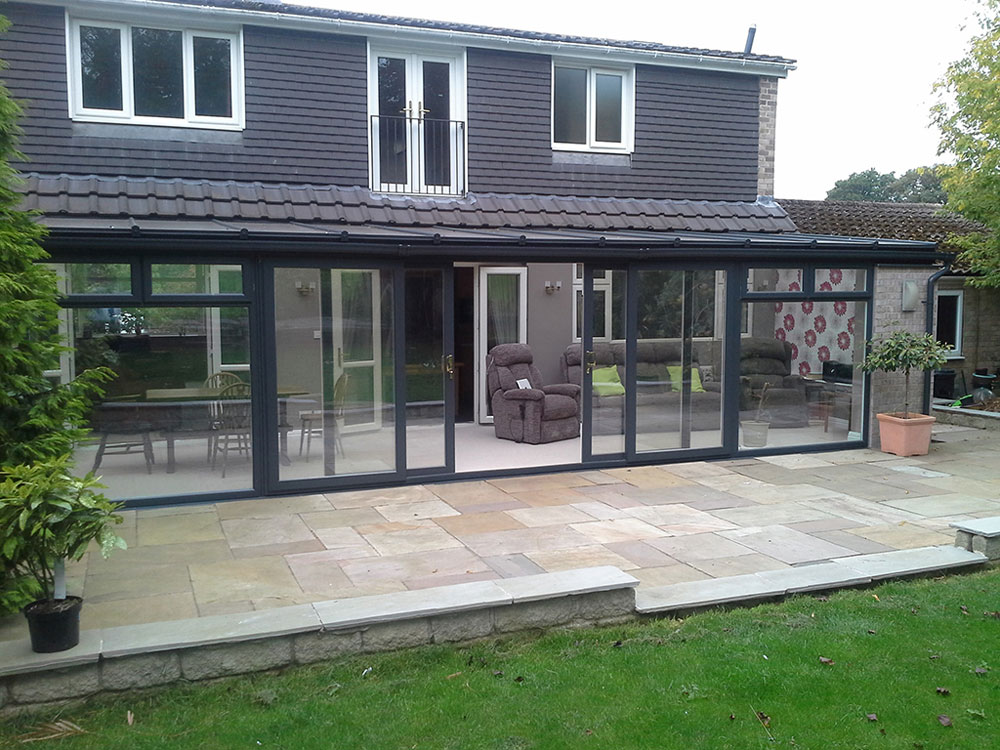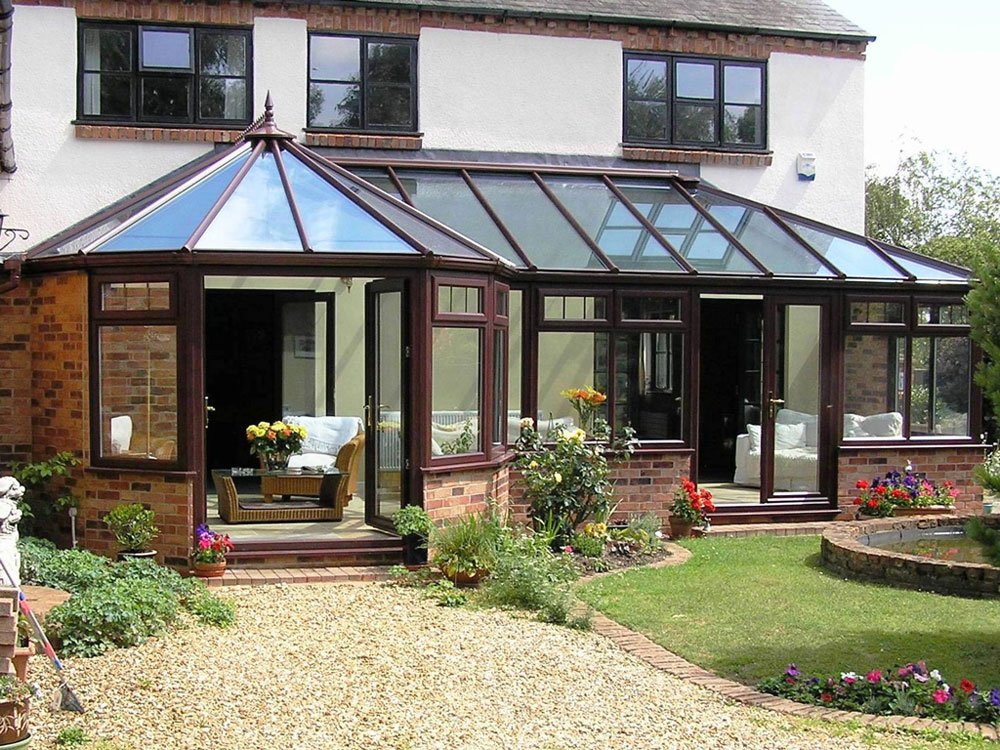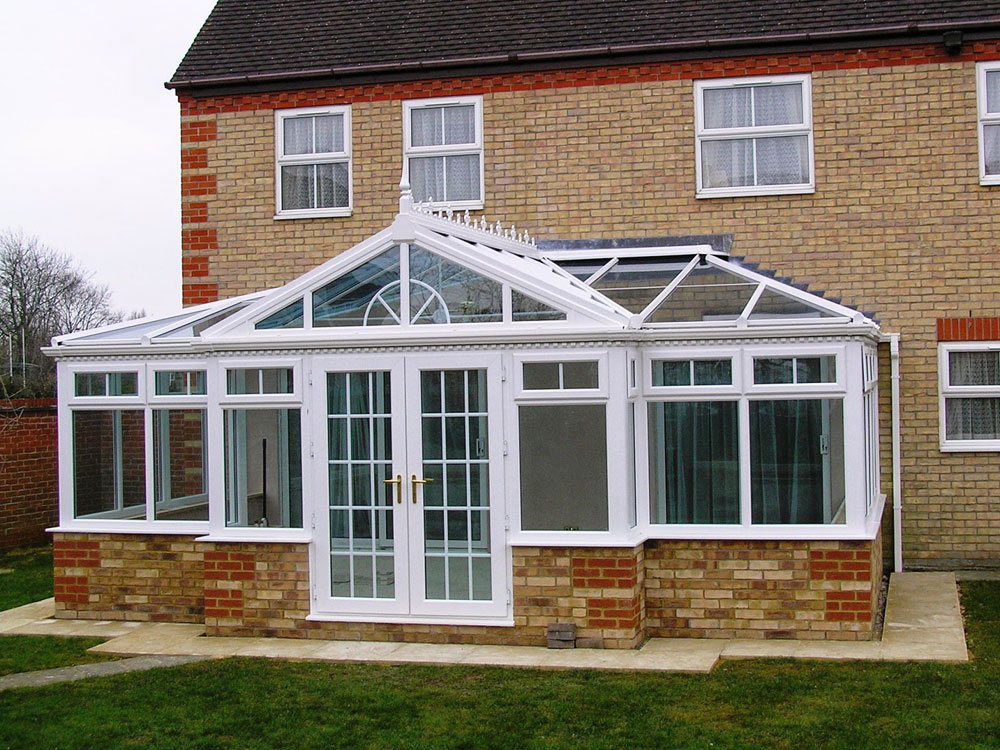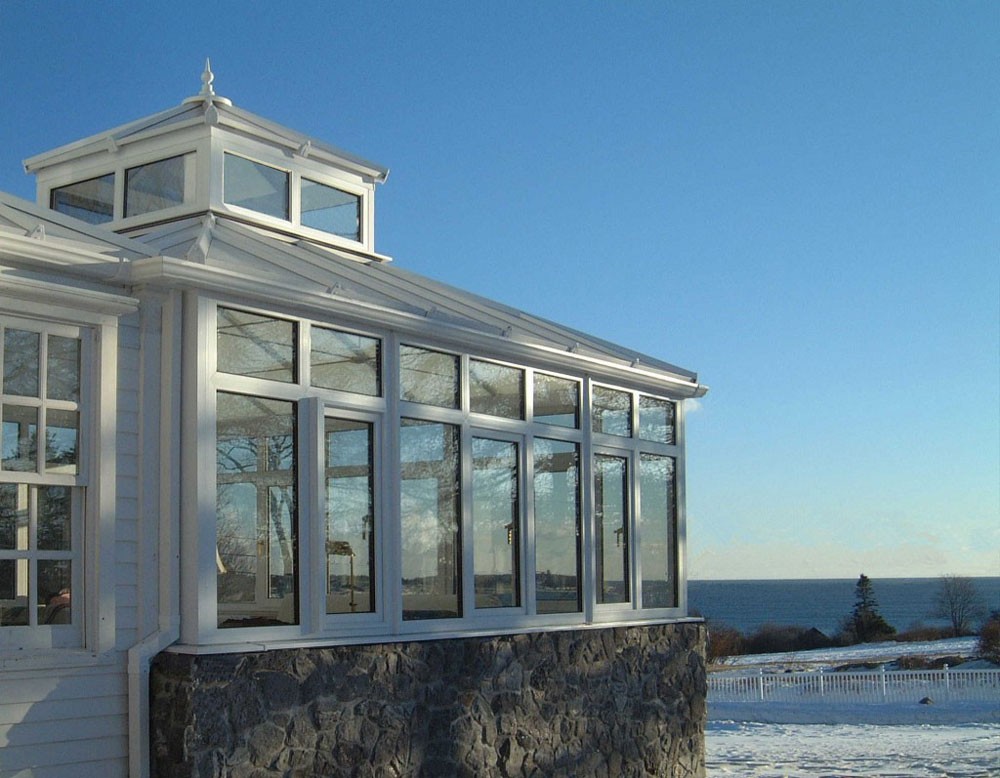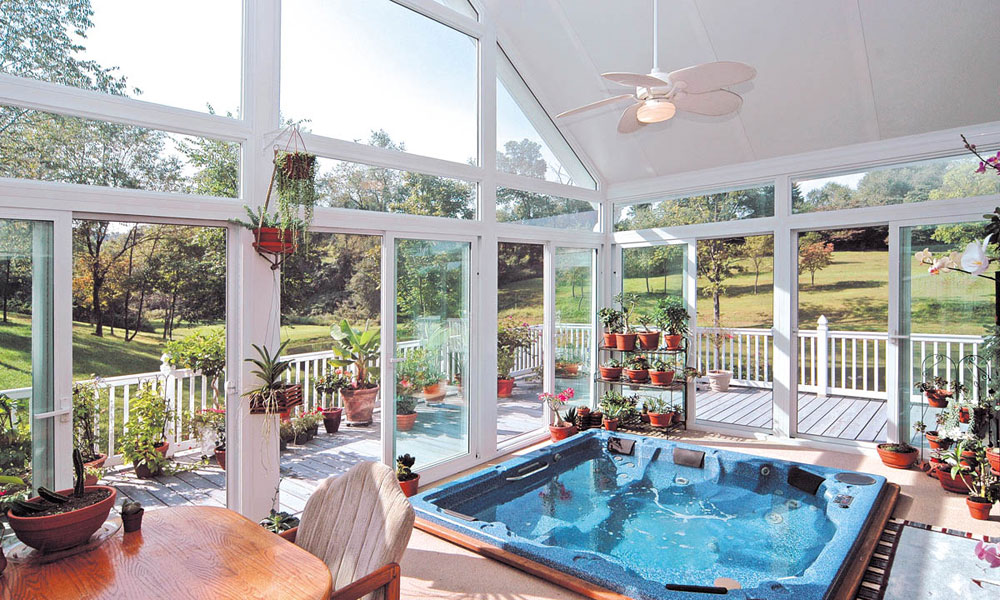Advertisement
It was in the 19th century that the domestic house conservatory first began to grow in popularity. As construction methods continued to develop, this type of structure became more commonplace. These days, owning a conservatory is an ambition for lots of homeowners, many of whom who see it as a symbol of middle class living.
The modern conservatory is a great way to expand existing living space, without having to up and move to another house. If planned and constructed correctly, it has the potential to add a great deal of value to a property too.
A top quality conservatory can be used as a rec room, a dining area, a sun room, a guest bedroom, or even as a play area. It offers the added benefit of being open to the back yard, so that sunlight is allowed to bathe the room in warmth. This means that homeowners can take advantage of the natural light, without exposing themselves to cold temperatures or poor weather.
The best kind of conservatory is one which is simply designed, because versatility is good attribute for this type of space. You really do want a conservatory which can be adapted to suit all occasions – be it a dinner party with friend, an unexpected babysitting session, or just a desire to kick back and relax.
In essence, a good house conservatory can be anything that you need it to be. For maximum flexibility, fill the space with furniture that is either adjustable (like nesting tables, folding dining furniture, or under sofa storage), or which can be easily moved around. This will make it easier to shape the environment into any kind of function room.
Why add one to the house?
If you are a keen gardener, you will be pleased to know that a conservatory is perfect for nurturing high maintenance plants. The temperature inside the space stays constant, but is still higher than outdoors, so fragile flowers can grow unimpeded. They get to take advantage of a warmer climate, without exposure to harsh weather.
However, it is still important to choose your plant varieties carefully. The climate inside a conservatory can get heated, and all plants need to be well equipped to deal with this. The best thing to do is pick out a selection of mid-to-tropical varieties.
Experiment With Rare Breeds – a conservatory is such a controlled environment that it is more than possible to nurture rare, or even near extinct, plants. Whilst this will take a lot of skill, if you love gardening, it could be a rewarding experience. Plus, you will be helping to protect and sustain a fragile species.
Enjoy Complete Control – the reason that fragile plant varieties can grow in a conservatory is because the space is enclosed, meaning that it can be changed in any way that you like. For example, if you fit central heating or air conditioning, you have complete control over the temperature, humidity, and dryness of the atmosphere.
Introduce Color To Your Life – there is no better way to introduce a little color into your life than with a selection of beautiful flowers and plants. They can be perfectly combined with a conservatory, because as soon as they begin to bloom, and the sun comes out, natural light will illuminate everything.
In many ways, a conservatory helps add flow and natural style. It makes the transition between rooms smoother, so that life within the space feels balanced and even. You can drift in and out of a conservatory as you like, without having to worry about turning on lights, or even taking your shoes off, if you have a hardwood or tiled floor.
Don’t confuse a conservatory for an orangery or a glass extension
A lot people do not fully understand the difference between a conservatory and an orangery, or a glass house. This is understandable, because the structures do look very similar. However, there are some key structural differences, and it is important to be aware of them.
A conservatory, even an expensive one, will be less structurally extensive than an orangery, because the latter features a lot of brickwork, and is more of a full on extension. However, conservatories have the added benefit of increased sunlight, space, and flexibility, without the need for this costly brand of construction.
The traditional orangery is a much more contained and private space, so it is usually enclosed. Yet, both conservatories and orangeries do feature a main door (usually with a lock) between the extension space and the primary building, whereas glass houses are considered to be an organic expansion of the main property. They tend not to have any separating features.
Designing it
If you want your conservatory to blend naturally with the rest of the property, it is essential to make sure that the style of both spaces accentuate one another. For instance, it is no good spending lots of money on a beautiful art deco conservatory, if the rest of your home is ultra modern. If anything, it will appear disjointed.
It is just as important to get the size of your conservatory right, particularly if you want to avoid making your house appear smaller. There is the loss of back yard space to think about too, so take a little time when deciding on the dimensions of your build.
For homeowners who are anxious about getting the dimensions right, there is a technique which can be used to help map out the intended space. You need to take a roll of string, and stretch it around the outline of where you would like your extension to be positioned. Then, step back and assess the scope of the space. You probably need room for a dining table or a sofa, as well as plenty of space to move around.
Types
Victorian conservatories
A typical 19th century conservatory has a wide bay facade, a steep roof, and intricate ridge features. This kind of build usually has a very classic look, which tends to make it unsuitable for contemporary properties.
The Victorian build can be constructed to two different conservatory designs; the first carries an angled facade containing three feature windows, and the second is a much more rounded design with five or more large windows. This second design is ideal for homeowners who want to introduce lots of extra light, but they can be costly.
This type of conservatory is much sought after. Yet, its popularity and intricate design mean that it is also one of the most expensive to build.
Edwardian/Georgian conservatories
The Edwardian conservatory is another popular choice for homeowners who wish to expand their properties. The primary difference between this style of conservatory and the Victorian style is that the ‘Georgian’ is much more cost-effective. It tends to have a high roof and square walls, unlike a lot of 19th-century builds.
The biggest benefit of an early 20th-century construction is that it is very modern and versatile. In fact, its 90-degree angles are a perfect match for all but the most unusually shaped homes. They are easy to plan, simple to build and offer homeowners some of the most competitive prices on the market.
Gable fronted conservatories
The gable fronted build is a specific variation of the early 20th century design. It shares a similar interior layout to the Edwardian conservatory, as both are based upon rectangular or square shaped floor plans, which fully utilize the indoor space.
They do differ in one important way, and it is related to the roof. For gable fronted conservatories, the front roof panel stays upwards, instead of being tilted backwards as it would be on an early 20th century build. This feature is designed to add height to the space, and to make the most of available sunlight.
The gable fronted conservatory has a distinctly church like style, and never fails to introduce a sense of size and scope to a property. It is a great choice for homes which have the right dimensions to match its lofty appeal.
Lean-to conservatories
The lean to conservatory is one of the most basic styles, but this does not mean that it isn’t a great choice. In fact, it is very cost efficient, appropriate for a broad range of different houses, and it is relatively easy to construct.
The design is based on a simple layout, featuring a rectangular shaped extension, with a long side which is affixed to the original property. It allows the maximum amount of natural light to enter the room. The lean to design is perfect for smaller properties, which suffer from a lack of interior space.
P-Shaped conservatories
The P-shaped conservatory blends the basic design of the lean to build with that of the 19th century construction, in order to create a variation which is great for introducing extra space to a property. However, it is important to remember that the home in question does need to have the appropriate dimensions for a P-shaped build.
This kind of house conservatory is valuable, because it can either be utilized as a single space, or it can be separated into two adjacent spaces. For example, it could be built, and then turned into a naturally lit dining room and entertaining space.
T-Shaped conservatories
As for the T-shaped conservatory, this variation is a robust choice for almost any kind of home, just so long as it is decently sized. It tends to come hand in hand with early 20th century characteristics, with the upper component of the T being used to affix the conservatory onto the property, and the middle component being left to jut outwards, usually towards the back yard.
If you have a medium to large home, and a sizable budget, you might want to think about a large scale projection. These can be particularly attractive, and serve to bring your back yard and the property together. Plus, the T-shaped conservatory is every bit as diverse as its P-shaped relative. It is constructed in two separate parts, and the twin spaces can be used for almost anything.
Lantern conservatories
The classic lantern style roof is best suited to period homes, because they have the benefit of more space, flexible dimensions, and an old world richness which is ideal for this kind of build. In fact, there are many architectural experts who would argue that this is the only style of conservatory truly befitting a period property.
The two tiered style offers a great sense of space and light, and the use of glass for the roof allows this natural light to enter unimpeded. If you are looking to really make a splash with your conservatory, this is the way to do it.
Getting planning permission
Whilst not all builds need planning permission, 60% of conservatories do need official approval before construction work can begin. It is the case that all local authorities and boards have their own ways of doing things, so a homeowner is obliged to get in contact with the local planning office, if they are thinking about building this kind of extension.
It is important to be aware that approval is not likely to be given if a proposed build spans more than 50% of the back yard. Moreover, conservatory builds should not be positioned less than twenty meters away from a public road or right of way.
If your build projects outwards from the property by over three meters, planning approval could be rejected, on the basis that your conservatory is a problem for neighbors.
Where you should built it
The majority of conservatories are constructed at the exterior of a home, either in or beside the back yard. Yet, it is possible to place them on the side or the front of a property. As a top quality conservatory is typically designed to accentuate and enhance a back yard area, it is almost always constructed on the ground floor.
However, there are no laws forbidding second floor builds. If you have planning approval for whatever it is you propose to create, you are free to go ahead and start building a conservatory. It is a good idea to spend some time thinking about how you would like your conservatory to be positioned – east, west, north, or south. On the whole east or west facing builds tend to be the most suitable.
FAQs about adding a conservatory to your house
1. What is a conservatory and what are its benefits?
A conservatory is a building with glass walls that are attached to a home and is frequently used as a greenhouse, sunroom, or gathering space for visitors. A conservatory can increase the value of your house, provide you with more living space, let in natural light, and connect you to the outside.
2. Is planning permission required to build a conservatory?
If a conservatory satisfies specific requirements, it typically does not need planning clearance. However, you could need planning approval if your conservatory will be larger than the permitted sizes or if you reside in a listed building or conservation area. Before beginning any work, it is advisable to consult with your local planning authority.
3. What size conservatory should I consider adding to my home?
Depending on the amount of space you have and how you intend to use it, you should think about the size of the conservatory. Make sure that the conservatory’s size is appropriate for the size of the house and the garden. The conservatory’s intended use, such as whether it will be used for eating, entertaining, or as a living space, should also be taken into account.
4. What materials should I use for my conservatory?
The conservatory’s building materials might vary but generally include aluminum, wood, or uPVC frames. Due to its minimal maintenance requirements, durability, and energy efficiency, uPVC is a preferred material. Timber frames can be stained or painted to match the home and create a more classic aesthetic. Aluminum frames come in a variety of colors, are lightweight, and are sturdy.
5. How long does it take to build a conservatory?
A conservatory can be built in a variety of times, but normally takes 3 to 6 weeks to finish. The size, construction materials, and whether or not a foundation or groundwork is necessary will all affect this. The amount of time required to get the required licenses or approvals from the local authorities must be taken into consideration.
6. Can I use my conservatory all year round?
A conservatory can be utilized all year round with the right insulation and heating. It’s crucial to take into account both heating solutions like underfloor heating or radiators as well as insulation choices like double-glazed windows. Depending on the location and temperature of the conservatory, cooling alternatives like air conditioning or ceiling fans can also be taken into account.
7. What heating and cooling options are available for a conservatory?
There are various heating and cooling options for conservatories. Radiators are a more conventional choice, but underfloor heating is more common because it distributes heat evenly. In hot weather, ceiling fans or air conditioning might assist in cooling the area. It’s crucial to make sure the heating and cooling choices used are suitable for the conservatory’s size and purpose.
8. What kind of maintenance does a conservatory require?
Depending on the materials utilized, a conservatory’s care needs can change. uPVC frames typically require just infrequent cleaning and little maintenance. To keep their beauty, timber frames will need to be painted or stained on a regular basis. To keep the conservatory in good shape, regular gutter and roof cleaning and maintenance will also be necessary.
9. How much does a conservatory cost to build?
The price to construct a conservatory will depend on its size, the materials used, and any extra features, including heating and cooling capacities. An inexpensive uPVC conservatory can run you anywhere from £5,000 to £15,000, while a larger conservatory with custom features can run you as much as £30,000.
10. Can I add a conservatory to any type of house, or are there specific requirements?
The majority of house types can accommodate a conservatory, however, there can be particular considerations. For instance, you might need to get your neighbors’ approval before building if you reside in a terraced or semi-detached home. You might need to meet further criteria to get authorization if you live in a listed building or conservation area.
If you enjoyed reading this article about adding a conservatory to your house, you should read these as well:

